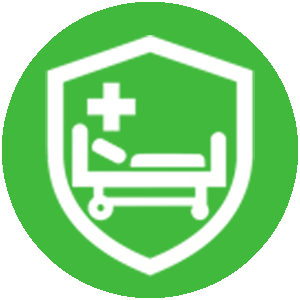



hospital bed head and foot choices drive safety, cleaning speed, and nurse workflow. They look simple, but they decide whether care teams move fast, clean faster, and keep risks low. Below, I’ll keep it plain, add real-world use cases, and give you a compact table you can use with procurement or QA. If you need specs or customization, see our in-house options here: Hospital Bed Head & Foot (Guide) and the Hospital Bed Head & Foot (Product Page).

Why it matters. Head/foot panels interact with side rails and the mattress. Gaps show up when the backrest goes up or the knee gatch moves. That’s where entrapment risk lives (commonly called Zone 6/7 in hospital bed talk).
What to do. Make “gap checks” part of acceptance testing and your SOP. Test with your actual mattress stack—standard foam, plus any overlays. If you change mattresses later, re-check. It’s boring, but it saves headaches.
Use case. A long-term care unit swapped in thicker overlays for comfort. Nobody retested. A small gap opened between the rail end and the headboard corner. Nurses noticed caught sheets first—not a crisis, but a red flag. Quick fix: install the spec’d wedge, retest, document. Done.
What to look for. Non-porous surfaces, no dirt traps, and fast wipe-downs. ABS or HPL panels keep cleaning time short and reduce rework. Avoid deep grooves or hardware that collects debris. Think “no tiny ledges.”
Tip. Ask for chemical-compatibility confirmation with your disinfectants. If your EVS uses chlorine or quats, verify no crazing or discoloration. Sounds basic, but yes, still gets missed.
Use case. A busy med-surg floor standardizes on ABS footboards with flush edges. EVS reports 15–20% less “re-clean” calls after night shift. Real value is time back, not numbers on a spreadsheet.

Why it matters. When seconds count, the head end needs to come off—clean and quick. A good quick-release lets the team access the airway without fighting the frame. No hunting for tools. No fiddly latches.
Checklist. Two-hand, tool-less release; tactile feel; no pinch points; clear icon or color cue. Train it in orientation. Muscle memory wins.
Why it matters. Footboard-mounted nurse controls keep hands where workflows live: linen change, charting, pump checks, quick height adjust. Less leaning over the patient. Less back strain. More speed.
Nice-to-have. Splash resistance, sealed buttons, and backlit icons. If your unit runs dark at night (many do), backlighting is not “nice,” it’s necessary.
Buyer note. Don’t pick by look only. Ask for edge sealing and fastener cover details. Tiny things, big difference in real life.

Your hospital bed mattress is part of the system. Add a low-air-loss overlay or swap thickness, and geometry changes. That’s where surprise gaps or scissor-like corners can show. Do a quick audit anytime you change the stack.
Pro move. Keep a one-page “Fit Sheet” in your IFU binder: bed model, head/foot panel SKU, mattress type, overlay type, last gap-test date, signoff. Boring doc, super helpful.
Look for. Impact-resistant corners, reinforced brackets, and sealed seams. IP splash ratings on controls help during high-volume cleaning. Parts should be field-swappable—head/foot panels, brackets, bumpers. Downtime hurts staffing and patient flow (yup, it does).
TPM angle. Bundle panels and brackets in your PM kit. Train biomed to swap in minutes, not hours.
Footboard often doubles as a mount point—chart holder, accessory bins, or a cover that hides cables. Clean cabling = clean look = safer movement around the bed. Keep the profile slim so transport teams don’t snag doorframes. Your porters will thank you (maybe).
If you’re a distributor or facility group, customization pays off: branded colorways, panel geometry tuned for your rails, matching overbed tables or cabinets, shared spare parts. That’s lifecycle value. We support OEM/ODM and batch buys for Hospital Beds, Home Care Bed, Hospital Bedside Cabinet, Hospital Overbed Table, Ward Screen, Hospital Bed Furniture—all under one roof. Explore variants here: Hospital Bed Head & Foot (Guide) or go direct to the Product Page.

| Dimension | What to Check | Recommended Practice | Notes for Teams |
|---|---|---|---|
| Safety fit (Zone 6/7) | Gaps at rail ends vs head/foot; changes during backrest/knee movement | Test with your real mattress stack; retest after any change | Add a “Fit Sheet” to IFU; sign off during commissioning |
| Cleaning & materials | Non-porous surface, rounded edges, no dirt traps | Prefer ABS or sealed HPL; verify chemical compatibility | Check edge caps and screw covers—tiny parts, big wins |
| Quick-release | Tool-less removal, clear icons, tactile latch | Train CPR access; two-hand release with gloves | Rehearse in orientation; record time-to-access |
| Nurse control at footboard | Button sealing, backlight, cable routing | Keep controls at foot; avoid leaning over patient | Label functions; avoid tiny icons in low light |
| Durability | Corner bumpers, reinforced brackets | Field-swappable parts; stocked spares | Bundle in PM kit; reduce downtime |
| Compatibility | Mattress thickness & overlays, linen bulk | Re-check gaps after swaps; document | Include Hospital Bed Mattress notes in SOP |
| Aesthetics/brand | Colorway, wood-look options | Match ward design without losing cleanability | Consistent look across units helps staff wayfinding |

You’re not just picking panels. You’re shaping safety checks, cleaning minutes, and nurse motion. Get the hospital bed head and foot right, and the whole setup works smoother. If you want a quick shortlist or need to tune specs for your side rails and mattress mix, tap these pages and we’ll sort it with you:
Hospital Bed Head & Foot (Guide) · Hospital Bed Head & Foot (Product Page)